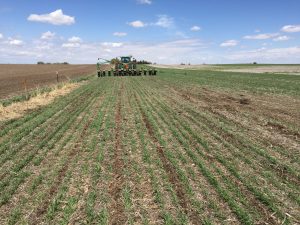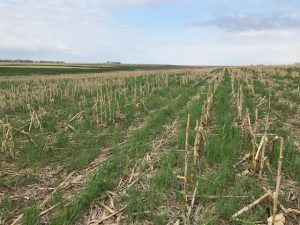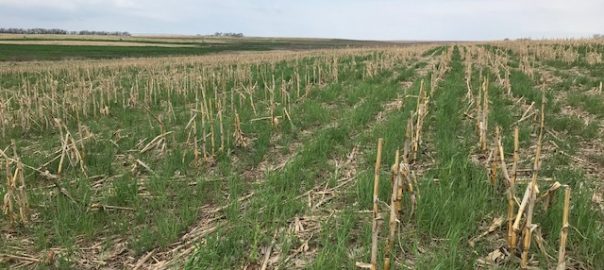Cover Crop Recipes Being Developed by States in the Midwest Cover Crop Council

Here, corn is being planted into recently terminated winter wheat that is 6 to 8 inches tall. (Photo Credit: Nathan Mueller, Nebraska Extension). As shown in Nebraska Recipe: Post Soybean, Going to Corn Recipe
A number of states within the Midwest Cover Crop Council have developed cover crop recipes. These publications are intended to provide a starting point for farmers who are new to growing cover crops. With experience, farmers may fine-tune the use of cover crops for their systems. Additional states will be coming soon. Recipes that have been developed can be accessed on the Midwest Cover Crop Council webpage.
Cover crops can be a useful conservation practice for improving soil health, scavenging and recycling nutrients, reducing erosion, and contributing to more resilient cropping systems over the long term. Many producers are interested in learning more about cover crop options and trying cover crops in their operation, but they are sometimes overwhelmed by the many different choices and options for cover crops. These recipes are intended to provide a relatively simple, low-risk strategy for integrating cover crops into a crop rotation specific for the different states. The majority of these recipes have been developed for corn-soybean rotation; post corn going to soybeans or post soybeans going to corn. The recipes include details on the specific cover crops, seeding rates and dates, and termination guidance and should be useful to both the producer and the crop advisor with limited cover crop experience.

As shown in Nebraska Post Corn, Going to Soybean recipe, a producer should terminate cereal rye growth when approximately 6–12 inches in height. (Photo Credit: Gary Lesoing, Nebraska Extension)
More cover crop recipes will be developed by different states in the future and may include recipes for post wheat for grazing, post wheat for nitrogen fixation, post wheat for high residue, post wheat for compaction. These are just a sample of potential recipes to come!
Author: Gary Lesoing, University of Nebraska – Lincoln
